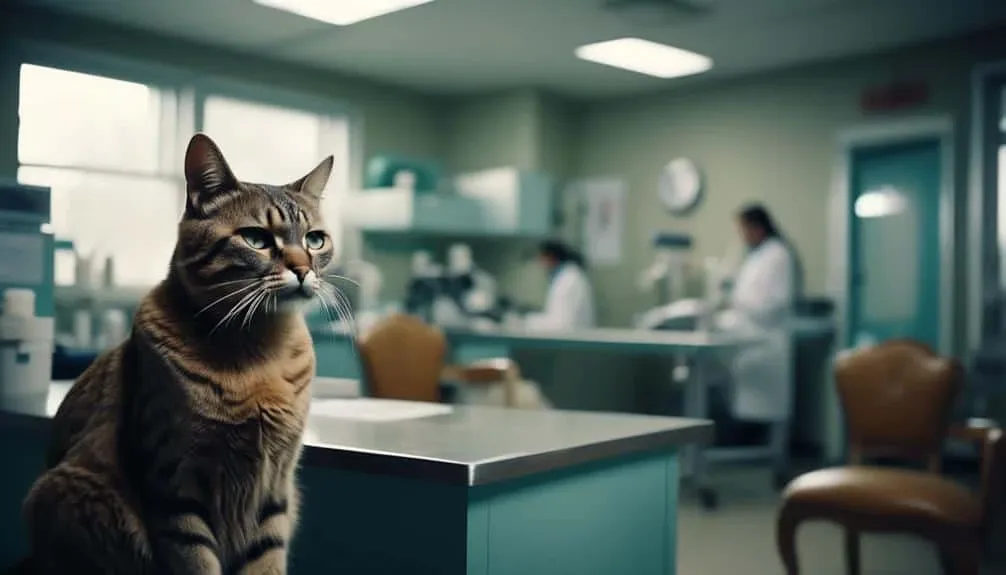The Best Fluffy Pancakes recipe you will fall in love with. Full of tips and tricks to help you make the best pancakes.

The recent outbreak of feline distemper has raised concerns among cat owners and veterinarians alike. With its highly contagious nature and devastating impact on kittens, urgent prevention measures are crucial to contain the spread of this deadly virus.
In this article, we will delve into the signs and symptoms of feline distemper, explore its causes and modes of transmission, discuss the necessary care and treatment for infected cats, and finally, highlight the preventive measures that can be taken to combat this outbreak.
By understanding the gravity of the situation and implementing these prevention measures, we can ensure the safety and well-being of our feline companions.
Key Takeaways
- Feline panleukopenia virus is highly contagious and can lead to severe illnesses in kittens.
- The virus affects fast-multiplying cells in the body, causing symptoms such as lethargy, vomiting, and diarrhea.
- Kittens with distemper require intensive care in a veterinary hospital, including IV fluid therapy and medication.
- Vaccination is the best prevention measure against feline distemper, and regular cleaning and hygiene practices can help reduce the risk of transmission.
Understanding Feline Distemper
Feline distemper, also known as feline panleukopenia, is a highly contagious viral infection that primarily affects kittens and can lead to severe illness within a short period of time. This disease poses a significant threat to the health and well-being of young cats and requires immediate attention.
Prevention strategies are crucial in controlling the spread of feline distemper. Vaccination is the most effective method to prevent the infection, and kittens should receive a series of vaccinations starting at around 6-8 weeks of age.
Additionally, early detection and treatment play a critical role in managing feline distemper. Recognizing the signs and symptoms, such as lethargy, inappetence, vomiting, and diarrhea, is essential for prompt intervention. Veterinary treatment aims to alleviate symptoms and support the body's immune response.
Signs and Symptoms of Distemper
The manifestation of feline distemper can be identified through a range of distinct signs and symptoms. Early detection of distemper is crucial to prevent complications and provide timely treatment. Cats infected with feline distemper may exhibit lethargy, inappetence, hypersalivation (nausea), vomiting, and diarrhea. These symptoms can progress rapidly, leading to severe dehydration and even sudden death.
Additionally, cats infected with distemper may have a high fever and become dehydrated quickly. Recognizing these signs and symptoms is essential for prompt intervention and proper care. Veterinarians play a vital role in diagnosing feline distemper through clinical examination, laboratory tests, and medical history assessment.
Causes and Transmission of the Virus
The panleukopenia virus, responsible for feline distemper, primarily infects dividing or multiplying cells and compromises various body systems with fast-multiplying cells. This viral infection can weaken the immune system response, making cats more susceptible to secondary infections.
The virus specifically targets the lining of the digestive tract, leading to symptoms such as vomiting and diarrhea. Kittens, with their underdeveloped immune systems, are particularly vulnerable to the virus.
The virus can be transmitted directly from cat to cat or picked up from the environment, as it can survive on surfaces for extended periods of time. Environmental contamination plays a significant role in the transmission of the virus, and cats can contract it even months later from contaminated surfaces.
Therefore, proper hygiene practices and regular cleaning and disinfection of surfaces are essential in preventing the spread of the virus.
Care and Treatment for Infected Cats
As we shift our focus to the care and treatment of cats infected with the panleukopenia virus, it is crucial to emphasize the importance of providing intensive supportive therapy to aid in the recovery and survival of these feline patients.
Distemper can be a deadly disease, especially for kittens, and often requires hospitalized care for them to have a chance of survival. Cats with distemper need to be isolated in a veterinary hospital where they can receive the necessary treatment.
This may include IV fluid therapy to address dehydration, medication to alleviate symptoms, pain management, nutritional support, and fever management. The goal of this intensive supportive therapy is to help the body fight off the infection and increase the chances of a successful recovery.
Prevention Measures to Combat the Outbreak
What measures can be taken to prevent and combat the outbreak of feline distemper?
- Establishing quarantine protocols: It is crucial to isolate infected cats to prevent the spread of the virus. Infected cats should be kept separate from healthy ones to minimize transmission and reduce the risk of a widespread outbreak.
- Emphasizing the importance of vaccination: Vaccination is the most effective method to prevent feline distemper. Kittens should receive a series of vaccinations starting at around 6-8 weeks of age. Regular booster shots should be administered to maintain immunity throughout their lives.
- Implementing proper hygiene practices: Regular cleaning and disinfection of surfaces can help reduce the risk of transmission. This includes thorough cleaning of litter boxes, food and water bowls, and other items that come into contact with infected cats.
Conclusion
In conclusion, feline distemper is a highly contagious and potentially deadly disease that primarily affects kittens. It is imperative to recognize the signs and symptoms, understand the causes and transmission of the virus, and promptly seek veterinary care for infected cats.
Implementing preventive measures, such as vaccination and proper hygiene practices, is crucial in combating this outbreak. By taking urgent and appropriate actions, we can protect the feline population and prevent further devastation caused by feline distemper.








